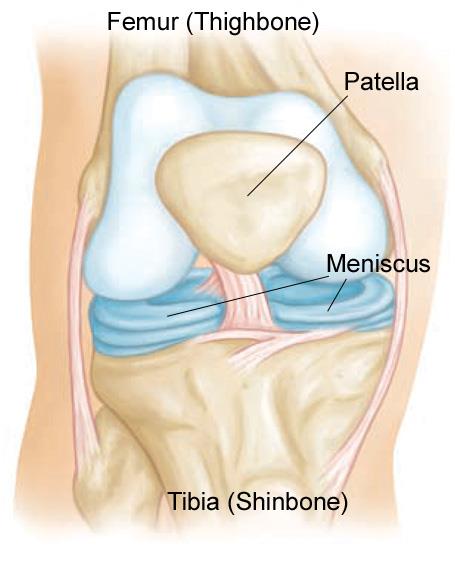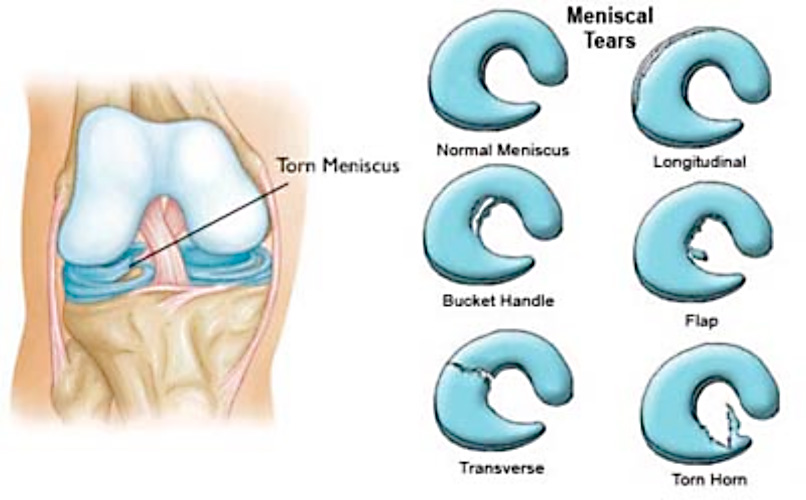Knowing the anatomy of the meniscus enables you to understand how a tear can affect your knee.
Anatomy of the Meniscus
First and foremost, it is important to understand that the knee joint is formed where the 3 main knee joint bones meet. These bones include; the femur (thighbone), tibia (shinbone) and patella (Kneecap).
The knee is also comprised of an additional 2 wedge-shaped “rubber” pieces. These pieces perform/act like shock absorbers i.e. they absorb shock between the shinbone and thighbone forming the meniscus. It is important to note that the meniscus is rubbery and tough which are ideal properties for cushioning the knee joint and keeping it stable.

Common Type Of Tears
It is important to note that meniscus tear in a number of ways. Because of this, tears are usually characterized according to their looks or where they occur. Some of the most common types of tears are; parrot-beak, longitudinal, mixed, flap, bucket handle and complex tears. The most common types of tears (sports-related tears) occur alongside other knee ligament injuries like; anterior cruciate ligament or ACL tears.

Causes
The most sudden meniscus tears occur during sports. They can happen when players squat or make knee movements resulting in twisting knees. Direct contact i.e. tackles also cause a significant number of meniscus tear cases.
It is important to note that older people have a higher chance of suffering from meniscus tears because of factors such as cartilage wears and weakness which occurs over time. Simple movements such as awkward twists when standing up are enough to cause meniscus tear in older individuals who are more susceptible to cartilage weakness.
Symptoms
There are a number of meniscus tear symptoms to look out for. The most common symptom is a pop sound. This sound is the immediate result after tearing your meniscus. It is important to note that some people can still walk with a torn meniscus. For instance, athletes can continue playing for a day or two after injury. It is, however, important to note that the knee gradually becomes swollen and stiff over time.
Other common meniscus tear symptoms include; pain and knee locking or catching. It is also important to note that meniscus tear symptoms tend to become severe after a prolonged period of time especially if treatment isn’t administered. In such cases, you may lack full range motion. Your knee can also drift or become loose causing a knee pop, lock or slip.
Looking For A Reliable Knee Orthopaedic Specialist?
Fast Medical Attention, Transparent Fees
Make an appointment for comprehensive care for your knee problems!
